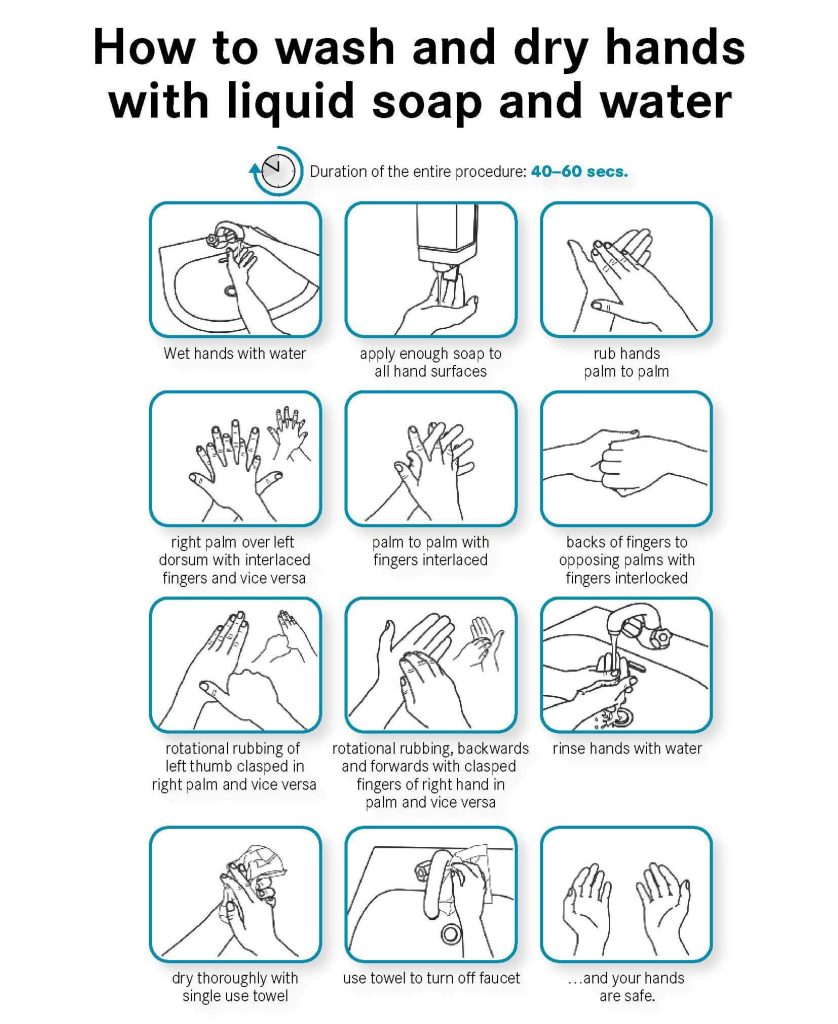Washing your hands is an essential step in stopping the spread of germs.
With flu season approaching and Covid-19 remaining in the community, it’s important to remember when and how to wash your hands properly.
Disease can spread by coughing or sneezing onto common objects, touching surfaces with germs on them, touching your eyes, nose or mouth before washing your hands and eating or preparing food without washing your hands.

When should you wash your hands?
- Before eating.
- After sneezing, coughing or blowing your nose.
- After using the bathroom.
- Before, during and after preparing food.
- After playing outside.
- Whenever your hands look dirty.
- After caring for someone who is sick.
- After touching animals.
- After touching rubbish.
How do you wash your hands properly?
- Wet your hands.
- Apply soap to your hands an rub together for 40-60 seconds.
- Make sure you clean the back and front of your hands, your wrists, between your fingers and under your nails.
- Rinse under running water and dry.
When your hands do not look visibly dirty, you can also clean them by using hand sanitiser containing 60% alcohol or more for at least 20 seconds.
Note: washing your hands with soap is preferred as sanitiser is not effective against all diseases such as gastroenteritis.

Caring for your skin
Washing your hands regularly can make your skin dry and could lead to cracks in the skin surface which allows bacteria, viruses and other pathogens to enter the skin.
Look after your skin by using water-based hand creams several times a day and wearing gloves during tasks such as washing the dishes or gardening.
Save Lives: Clean Your Hands.
Find more of our health tips here.
Book an appointment with us here or call us on 9651 5559.
Sources:
Centres for Disease Control and Prevention. When & how to wash your hands. https://www.cdc.gov/handwashing/when-how-handwashing.html
World Health Organization. World Hand Hygiene Day. https://www.who.int/campaigns/world-hand-hygiene-day
